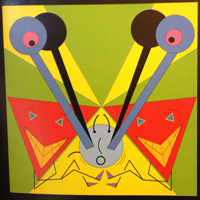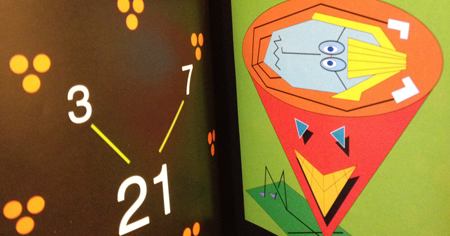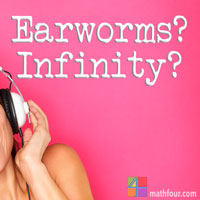 I’ve been dying to check out the book You Can Count on Monsters for a while. My sweet niece, without knowing how much I wanted it, gave it to me for Christmas!
I’ve been dying to check out the book You Can Count on Monsters for a while. My sweet niece, without knowing how much I wanted it, gave it to me for Christmas!
It’s a book about numbers.
You Can Count on Monsters is a book that illustrates the numbers 1-100 in a very special way. Each of the prime numbers has an original “monster” that has a link to it. For instance, 2 has two eyes, 7 has a body with seven sides, and the edges of 19’s eyes – they total nineteen.
Each of the composite numbers is a blend of mosters from the prime numbers of its factorization.
So 14 is the 2-monster hanging around in the mouth of the 7-monster. The other composite numbers range from cute to crazy-hard-to-recognize (like the 72-monster).
Enjoy You Can Count on Monsters in order.
For each number, you can examine the monster and see how it was created – what aspects of the monster correspond to the number.
Starting at the beginning seems to be the best bet. Jumping into the middle got me lost. When I began at 1 and then allowed the composite numbers to “grow” on each other, things made much more sense. And as the prime numbers get larger, it’s harder to tell what piece of the image to count.

Walking through it with a child will be very interesting too. Daughter is two, so she’s pretty much not interested in numbers higher than five. Although I can start using the terminology “composite numbers” and “prime numbers.”
You can use it as a template.
Making your own monsters is a fun, crafty way to explain prime numbers and composite numbers. Children would notice quickly that there aren’t many ways to represent 2 – drawing two sided figures is a bit of a challenge.
The obvious 2 monster has two circles, while the 3 monster has either three circles or is a triangle. But the bigger the prime numbers get, the more creative (and different from the book) you can get.
And how you put them together – well, that’s where the real fun is. There are so many different ways to create the composite numbers!
There is a drawback.
I was showing You Can Count on Monsters to my Ma. When I showed her the 6-monster she said, “That’s not counting.”
Indeed the images represent factorizations, not summations. Which means the image that involves 2 and 3 “officially” represents 6 but there are only 5 things “going on” in the picture.
She’s got a point.
What can you do?
Have you seen the book? Are your kids open to drawing number critters? And do you, or your kids, see it like Ma does?
Share your thoughts and experiences with You Can Count on Monsters in the comments!
Related articles
- Create Your Own Number Path – at Home!
- Teaching Little Ones Math with the Toddler Counting iPhone App
- Early Childhood Math Teaching Tips Roundup
- Adding Fractions with Cuisenaire Rods

This post may contain affiliate links. When you use them, you support us so we can continue to provide free content!






